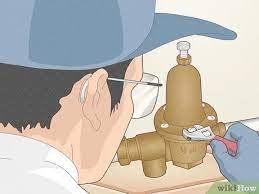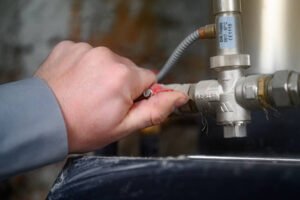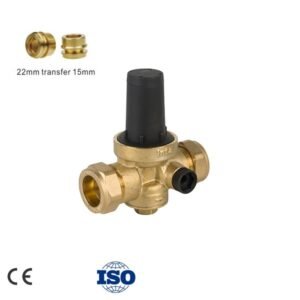Introduction:
Pressure reducing valves play a crucial role in maintaining optimal pressure levels within various systems, from plumbing and heating to industrial processes. Ensuring these valves function correctly is paramount to avoid costly damages and ensure safety. In this comprehensive guide, we’ll delve into the intricacies of testing pressure reducing valves, providing step-by-step instructions and essential insights for technicians and DIY enthusiasts alike.
Understanding Pressure Reducing Valves:
Before delving into testing procedures, it’s essential to understand the basic principles behind pressure reducing valves (PRVs). These valves regulate and maintain a consistent pressure level downstream, regardless of fluctuating pressures in the upstream system. They achieve this by automatically adjusting the flow of fluid to maintain the desired pressure.
PRVs are commonly used in various applications, including residential plumbing systems, commercial buildings, fire protection systems, and industrial processes. They come in different types and designs, such as direct-acting, pilot-operated, and balanced bellows valves, each suited for specific applications.
Why Testing is Crucial:
The reliability and efficiency of pressure reducing valves directly impact the performance and safety of the systems they regulate. Regular testing helps identify potential issues early on, preventing costly repairs, downtime, and safety hazards. Additionally, proper testing ensures compliance with regulatory standards and building codes.
Testing Pressure Reducing Valves:
Testing a pressure reducing valve involves a series of systematic steps aimed at evaluating its performance and integrity. Here’s a comprehensive guide on how to test a pressure reducing valve effectively:
- Visual Inspection:
Begin by visually inspecting the pressure reducing valve and its surroundings. Look for any signs of leaks, corrosion, or physical damage. Ensure that the valve is properly installed and secured according to manufacturer guidelines. - Pressure Gauge Calibration:
Calibrate pressure gauges before testing to ensure accurate readings. Use a calibrated pressure gauge with the appropriate range for the system’s operating pressure. Follow the manufacturer’s instructions for calibration procedures. - Shut Off the Supply:
Before testing, shut off the water or fluid supply to the system containing the pressure reducing valve. This prevents any potential hazards during the testing process and ensures accurate results. - Pressure Adjustment Verification:
If the pressure reducing valve has an adjustable set point, verify that it is set to the desired pressure level. Use a pressure gauge to confirm the set point and adjust if necessary, following the manufacturer’s guidelines. - Pressure Build-Up Test:
Gradually open the supply valve to allow pressure to build up downstream of the pressure reducing valve. Monitor the pressure gauge readings to ensure that the valve maintains the desired pressure within the specified tolerance range. - Pressure Relief Valve Test:
Check the operation of the pressure relief valve, if applicable. Pressure relief valves are designed to open and relieve excess pressure if the pressure reducing valve fails or if pressure exceeds safe limits. Ensure that the relief valve functions correctly and resets after relieving pressure. - Flow Rate Measurement:
Measure the flow rate downstream of the pressure reducing valve using a flow meter. Compare the measured flow rate to the expected flow rate based on system requirements. An abnormal flow rate may indicate issues with the pressure reducing valve or downstream components. - Pressure Drop Test:
Perform a pressure drop test by rapidly opening and closing downstream valves while monitoring the pressure gauge readings. The pressure reducing valve should respond quickly to changes in flow demand, maintaining a stable pressure level. - Leak Detection:
Inspect the pressure reducing valve and its connections for any signs of leaks during the testing process. Even minor leaks can indicate potential issues with seals, gaskets, or valve integrity. - Record Keeping:
Keep detailed records of the testing process, including pressure readings, flow rates, observations, and any anomalies encountered. These records serve as valuable documentation for future reference and maintenance purposes.
Common Issues and Troubleshooting:
During testing, technicians may encounter various issues that require troubleshooting. Some common problems include:
- Pressure fluctuations or instability
- Excessive pressure drop across the valve
- Leakage around valve seals or connections
- Inaccurate pressure regulation
- Malfunctioning pressure relief valve
Troubleshoot these issues systematically, referring to manufacturer guidelines and technical resources. In some cases, repairs or adjustments may be necessary to restore the pressure reducing valve’s functionality.
Conclusion:
Testing pressure reducing valves is a critical maintenance task that ensures the reliability, efficiency, and safety of fluid systems. By following proper testing procedures and guidelines, technicians can identify issues early on, prevent costly damages, and optimize system performance. Regular testing, combined with proactive maintenance, prolongs the lifespan of pressure reducing valves and ensures uninterrupted operation of the systems they regulate.






